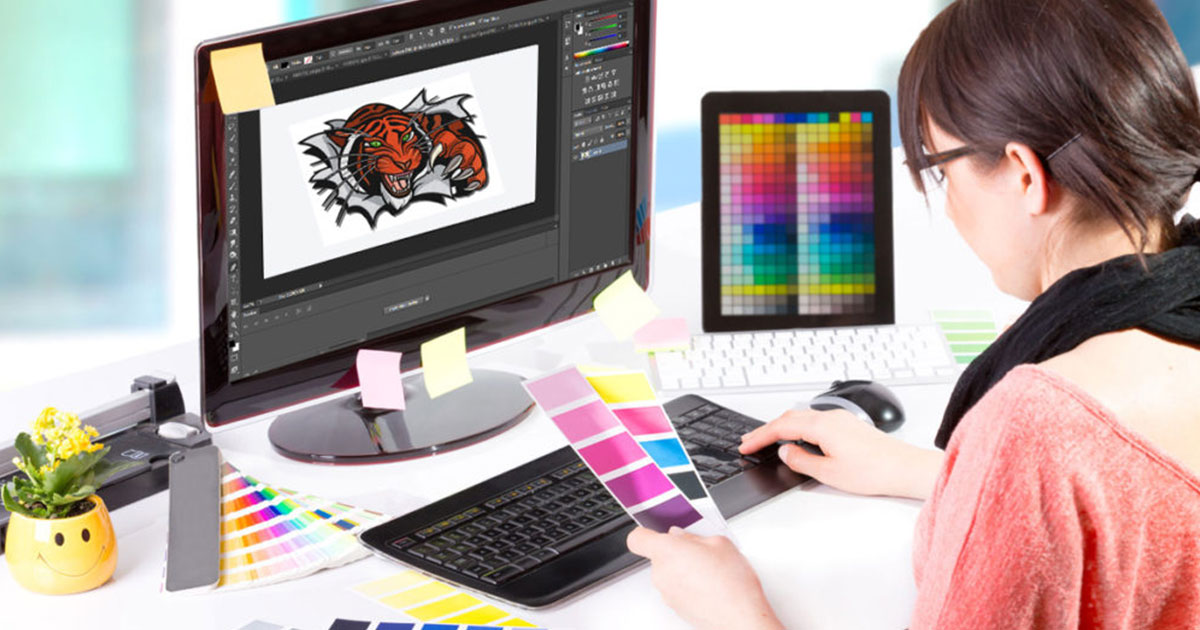Comprehensive Digitizing for Embroidery: From Style to Stitch
Comprehensive Digitizing for Embroidery: From Style to Stitch
Blog Article
Mastering the Needlework Digitizing Refine: Your Ultimate Guide
Embroidery digitizing is a precise craft that requires precision and competence to equate intricate layouts right into electronic layouts for equipment needlework. As craftsmens get started on this trip to understand the needlework digitizing procedure, a detailed understanding of the essentials establishes the foundation for excellence.

Understanding Embroidery Digitizing Fundamentals
Needlework digitizing essentials create the structure upon which elaborate layouts are equated right into machine-readable styles for exact sewing. This preliminary step in the embroidery digitizing process is crucial for guaranteeing that the final embroidered product is a devoted representation of the original design. Understanding needlework digitizing essentials entails realizing vital principles such as stitch types, stitch direction, thickness, padding, and draw payment.
Stitch kinds play an essential duty in determining the visual and textural end result of the stitched style. By selecting the suitable stitch type, whether it be satin, fill, or running stitch, digitizers can attain the preferred effect and enhance the total top quality of the embroidery. Additionally, sew direction influences the flow and dimension of the layout, while thickness figures out the spacing and coverage of the stitches.
Furthermore, padding sewing offers stability to the layout by protecting the material and stopping distortion during the needlework procedure. Pull settlement is one more vital consideration to neutralize the natural propensity of fabric to agreement when stitched. Mastering these needlework digitizing basics is basic for developing professional-quality stitched items.
Choosing the Right Digitizing Software Application
Choosing the appropriate digitizing software application is an important choice that considerably affects the performance and top quality of the embroidery digitizing process. Digitizing for Embroidery. When selecting the appropriate digitizing software, it is necessary to take into consideration factors such as the complexity of styles you prepare to develop, the user-friendliness of the software program, the degree of customer support provided, and the compatibility with your needlework maker
There are numerous digitizing software program options available on the market, varying from standard programs for newbies to innovative software program for specialist digitizers. Some popular choices consist of Wilcom EmbroideryStudio, Hatch Needlework Software Application, and PulseID. These software program packages offer a large range of tools and attributes to aid you develop detailed layouts with convenience.
Prior to choosing, it is suggested to explore the various software program alternatives with complimentary trials or demos to determine which one ideal matches your demands. Furthermore, reviewing testimonials and looking for suggestions from skilled digitizers can provide beneficial understandings into the strengths and weak points of each software (Digitizing for Embroidery). By carefully evaluating your needs and comparing the features of various digitizing software program, you can make an educated choice that boosts your embroidery digitizing workflow
Digitizing Devices and Methods

Optimizing Design Settings for Embroidery
Grasping the complexities of style settings is fundamental in accomplishing optimal cause the embroidery digitizing process, structure upon the structure laid by recognizing digitizing devices and methods. When enhancing style setups for needlework, it is necessary to consider elements such as stitch type, density, padding, draw payment, and enrollment. Stitch type selection influences the total look of the style, with choices like satin, fill, and running stitches using various structures and results. Density refers to the spacing and density of stitches, impacting the style's coverage and resilience. Proper padding sewing offers stability and prevents textile distortion, particularly for complex designs or on elastic materials. Pull compensation readjusts for material stretch during sewing, making sure accurate layout replication. Enrollment setups align various elements of the layout precisely, maintaining general design honesty. By fine-tuning these style settings, embroiderers can boost the high quality and accuracy of their embroidered productions.

Troubleshooting Common Digitizing Issues
When coming across typical digitizing concerns during sites the needlework process, it is essential to comprehend the origin and execute efficient options promptly. One typical trouble is stitch density problems, where stitches might be too thick, creating the material to tighten, or also sporadic, bring about gaps in the style. Readjusting the stitch density settings in the digitizing software program can assist solve this concern.
Another regular obstacle is string breaks during the embroidery process. This can take place as a result of different reasons such as inaccurate stress settings, dull needles, or utilizing low-grade thread. Making sure correct upkeep of the embroidery device, consisting of normal needle adjustments and tension adjustments, can reduce the incident of string breaks.
Moreover, design registration errors can lead to misaligned components within the needlework design. Checking the style positioning in the digitizing software application and making needed changes prior to sewing can aid in preventing this concern. By resolving these usual digitizing concerns without delay and properly, you can ensure a smoother embroidery procedure and top quality finished products.
Conclusion
To conclude, mastering the needlework digitizing procedure needs a solid understanding of the basics, the right choice of software, and expertise of devices and methods. Enhancing style setups and fixing typical digitizing issues are crucial action in Your Domain Name making certain high-quality needlework results. By following these actions carefully, one can achieve accuracy and effectiveness in the digitizing process.
Report this page